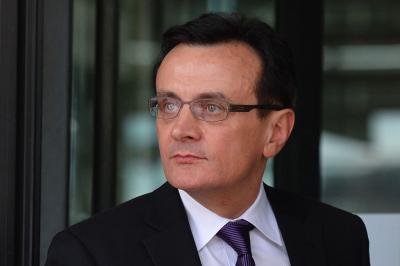A day after AstraZeneca inked a new $185 million licensing deal to reenter the GLP-1 frenzy, CEO Pascal Soriot says the future marketplace will center less on treating obesity and more on sustained weight management.
“One of the key pieces for us is to have an agent that will target those people and help them lose a bit of weight,” he said at a press briefing Friday.
Though leaders like Eli Lilly and Novo Nordisk have shown that their injectable options can help patients lose north of 20% of their body weight, Soriot doesn’t think that’s really what most patients will need. Instead, GLP-1s will be used most by patients who want to lose somewhere between 5-10%, be it for cosmetic reasons, to prevent future metabolic issues or both. He said future generations of the class are likely to be oral small molecules that are part of a combination treatment to limit muscle loss.

AstraZeneca is attempting to do just that. The company just acquired ex-China rights to Eccogene’s oral GLP-1 for $185 million upfront and plans to tack on AZD6234, an internal phase 1 obesity med aimed at patients with related comorbidities. The issue with the first agents, Soriot says, is that the weight people lose is both fat and muscle mass, and the lack of durability means the weight people regain is mostly fat.
“The insulin sensitivity that comes from your muscle mass is key,” he said. “And that's really the next frontier in obesity.”
At the core of this distinction in size and weight is body mass index, a score based on patients’ height and weight that has been used to ascribe risks to other metabolic diseases. It has come under more scrutiny in recent years as an imprecise assessment of metabolic health, in part because it doesn’t delineate between muscle mass and fat. Soriot said the measurement needs to improve.
“It's a good measure, but [it] has to evolve,” he said. He noted that “not all fat is dangerous” and that BMI also doesn’t specify where fat is located in a person's body.
“That is not measured well by BMI, that is very clear,” he said, adding “we need to find” a better measurement in the future.
Thinking about the patient population as a whole, Soriot deferred comments about whether GLP-1 treatments should be used in children to regulators. Chief Financial Officer Aradhana Sarin said it will be a decision made by a family’s pediatrician. Both Lilly and Novo Nordisk are testing their weight loss drugs in children. Researchers from the University of California, Irvine published a commentary in late August cautioning the potential for misuse in the pediatric population. Soriot reiterated that the focus population for AstraZeneca is older adults who need to lose a little bit of weight.
“Those are the patients who need to be treated for the risk factors and lose a bit of weight to get back to a more target, more ideal BMI.”